#geoffrey unsworth
Photo
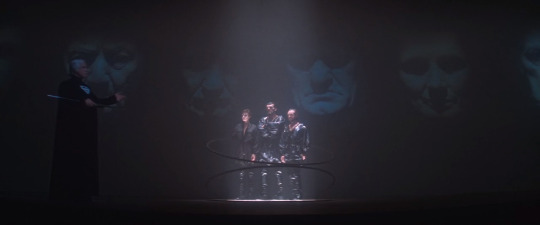
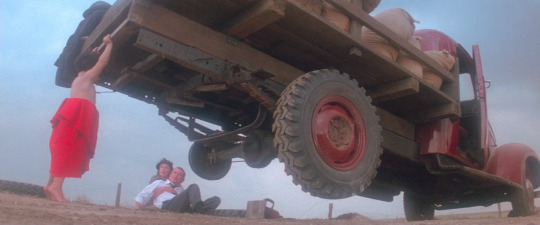
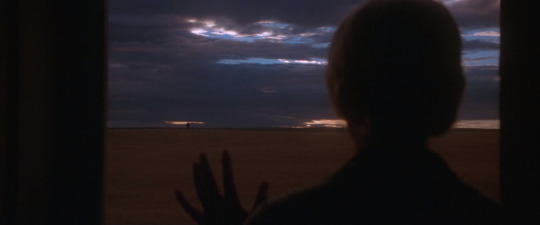



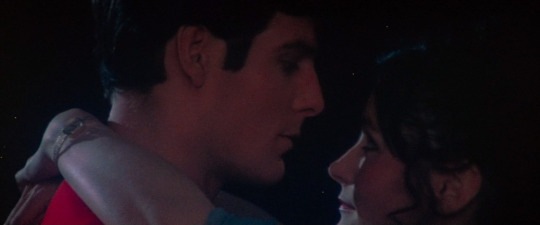

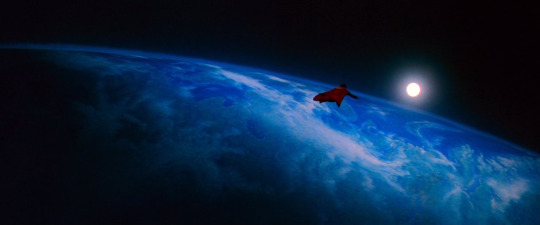

**Shots of the Movie**
Superman: The Movie (1978)
Director: Richard Donner
Cinematographer: Geoffrey Unsworth
#shots of the movie#superman#superman 1978#1978#richard donner#geoffrey unsworth#christopher reeve#margot kidder#lois land#clark kent#dc comics#marlon brando#terrence stamp#zod#fortress of solitude#dc#1970s#1970s cinema#1970s film#70s cinema#warner bros#70s#kal el#1978 in film#1978 cinema#stills#cinema#1978 film#comic book#2.35:1
25 notes
·
View notes
Photo
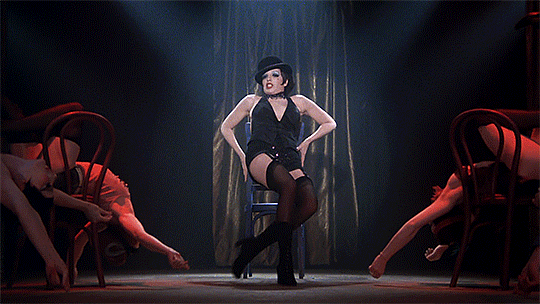
You have to understand the way I am, mein herr
A tiger is a tiger, not a lamb, mein herr
You'll never turn the vinegar to jam, mein herr
So I do, what I do
When I'm through, then I'm through
And I'm through, toodle-oo
Cabaret (1972, dir. Bob Fosse)
#liza minnelli#cabaret#bob fosse#geoffrey unsworth#musicals are the greatest form of cinema#minnelli has one of the all time great performances here#i should do a post about cabaret sometime since i can use tumblr for rambles#extremely sad movie#it rocks
19 notes
·
View notes
Text

Open the pod bat doors HAL
2001: A Space Odyssey (1968)
Dir. Stanley Kubrik
DoP. Geoffrey Unsworth
#bw studies now in color#procreate#2001 a space odyssey#stanley kubrick#dave bowman#keir dullea#Geoffrey Unsworth
4 notes
·
View notes
Text
"BLANCHE FURY" (1948) Review
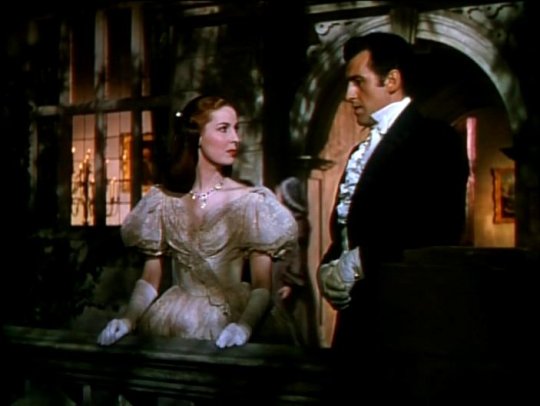
"BLANCHE FURY" (1948) Review
I suspect that many fans of costume dramas would be fascinated to know about the series of period dramas released by the British film industry during the post-World War II era. A good number of those films were released by a British film studio known as Gainsborough Pictures. But not all of them were released through this particular studio. Some were released through other studios or production companies . . . like the 1948 period drama, "BLANCHE FURY".
Based upon the 1939 novel written by Marjorie Bowen (under the pseudonym of Joseph Stearling), "BLANCHE FURY" told the story of two lovers during the 1850s, who become embroiled in adultery, greed and murder. More importantly, Bowen's novel and the movie was inspired by a real-life case involving the 1848 murder of an estate owner and his adult by a tenant farmer trying to stave off a bad mortgage. The story surrounding "BLANCHE FURY" proved to be a bit more complicated and melodramatic.
The story begins with a beautiful, impoverished gentlewoman named Blanche Fuller, who is forced to serve as a domestic companion for a wealthy woman (think of Joan Fontaine in 1940's "REBECCA"). To Blanche's great relief, she receives an invitation to become governess for the granddaughter of her rich uncle Simon Fuller. Upon her arrival, Blanche becomes romantically involved with Simon's only son, the weak-willed Laurence. She learns that her uncle and cousin have assumed the surname of Fury, which belonged to the previous owner of the estate, the late Adam Fury. She also meets Philip Thorn, Adam's illegitimate son, who serves as the estate's head groom and resents Simon and Laurence's possession of his father's estate. Blanche decides to marry Laurence for the sake of security and wealth but becomes dissatisfied with her marriage. She and Philip also fall in love and quickly drifts into a sexual affair. Longing for possession of both Blanche and the estate, Philip drags Blanche into a plot that leads to double murder.
The first thing that caught my attention about "BLANCHE FURY" that it is a beautiful looking film. Producer Anthony Havelock-Allan, director Marc Allégret and cinematographers Guy Green and Geoffrey Unsworth really made use of the Technicolor process. And if I must be brutally honest, I could say the same for the costumes designed by Sophie Devine, who created some colorful outfits for leading lady, Valerie Hobson, as shown below:


Despite my admiration for the photography and costumes, I was not that impressed by the set designs and especially the production designs. Well . . . let me take some of that back. I had no problems with John Bryan's production designs for scenes featured in smaller rooms - Philip's quarters and a private bedroom or two. But I was not impressed by scenes in large rooms - you know, the drawing room, foyer or library of the Fury manor. Quite frankly, these "sets" resembled badly made matte paintings instead of lived-in rooms. Lifeless. An individual museum room with a collection of paintings looked warmer.
But I certainly had no problems with the story. The latter begins with Blanche in the process of giving birth before it flashes back to her days as a paid companion. Thanks to the screenplay written by Audrey Erskine-Lindop and Cecil McGivern, audiences received several glimpses into Blanche's mindset - her frustrations as a paid companion and later, as wife to the weak-willed Laurence Fury; her sexual fascination with Philip Thorn and the later realization that she had bitten off more than she could chew, thanks to Philip's murder plot. For me, the most memorable scene in the entire movie featured an argument between the unfaithful Blanche and the arrogant Laurence, who had insisted that she interrupt her rest to entertain a guest who had arrived with him and his father in the late evening. Blanche's blatant refusal to blindly obey her husband nearly caused me to stand up and cheer, despite the fact she had spent the last 24 hours cheating on him with Philip. I had an easier time understanding Blanche than I did Philip. He seemed to have this attitude that the Fury estate should have been given to him, despite being born on the wrong side of the blanket. And the fact that he was willing to destroy the Fuller-Fury clan (with the exception of Blanche), including Laurence's young daughter, left me feeling cold toward him in the end.
"BLANCHE FURY" featured some very solid performances, despite a penchant for some of the cast to nearly drift into slightly hammy acting. I could never accuse Valerie Hobson of overacting. Mind you, her performance did not exactly knock my socks off, but I thought she did a pretty job. Her best moments proved to be the Blanche/Laurence quarrel and Blanche's horror over Philip's arrogant behavior following the deaths of her husband and father-in-law. I had recently come across an article suggesting that Stewart Granger was not exactly the most skillful actor. Recalling his performances in movies like "KING SOLOMON'S MINES", "SCARAMOUCHE" and "BHOWANI JUNCTION", I found this opinion hard to accept. But a part of me could not help but noticed that his performance in "BLANCHE FURY" - especially in the movie's last half hour - threatened to wander in the realm of the melodramatic. Otherwise, I found his performance satisfactory. Michael Gough fared just as well as Miss Hobson as Laurence Fury - especially in the memorable Blanche/Laurence quarrel scene. Though, there were moments when I thought he would go a little overboard. Sybille Binder, who portrayed the Furys' stoic housekeeper Louisa was just that . . . stoic. I thought she would play a major role in the movie. But in the end, I felt that her time was more or less wasted. Susanne Gibbs made a very charming Lavinia Fury, Laurence's young daughter. But I thought the best performance came from Walter Fitzgerald, who portrayed Blanche's no-nonsense uncle (later, father-in-law) Simon Fury. I found it rather interesting that Fitzgerald could portray such a blunt character with great subtlety. He seemed to be the only cast member who did not threatened to become melodramatic.
I may have had a few problems with "BLANCHE FURY". But if I must be honest, I found it entertaining and rather satisfying. Thanks to Marc Allégret's direction, Audrey Erskine-Lindop and Cecil McGivern's entertaining screenplay, Guy Green and Geoffrey Unsworth's photography and a solid cast led by Valerie Hobson and Stewart Granger, I found the movie more than satisfying.
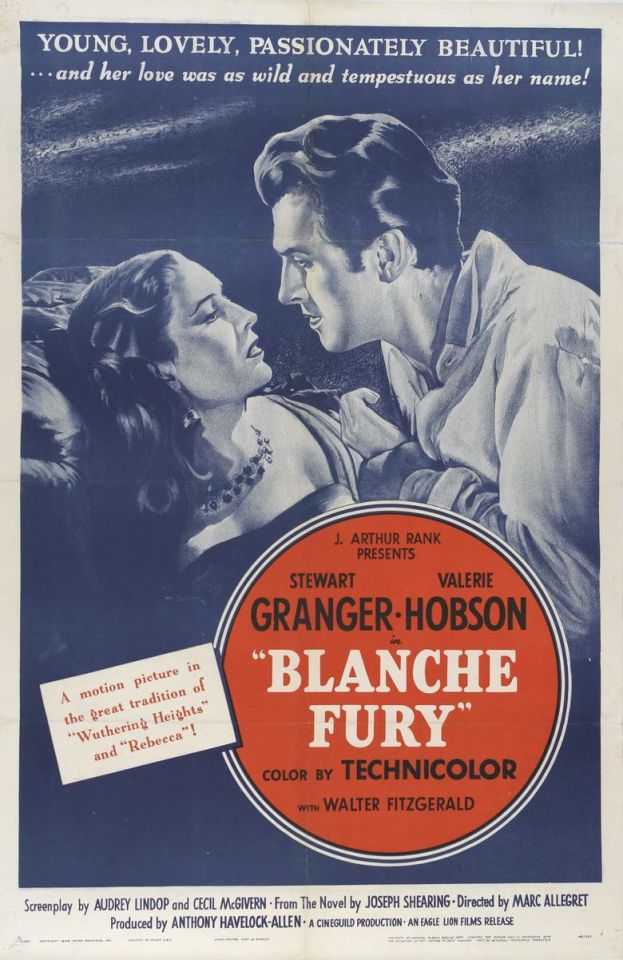
#gainsborough pictures#blanche fury#blanche fury 1948#marc allegret#valerie hobson#stewart granger#victorian age#joseph shearing#michael gough#walter fitzgerald#geoffrey unsworth#susanne gibbs#maurice denham#sybille binder#ernest jay#allan jeayes#old hollywood#period drama#period dramas#costume drama
0 notes
Text

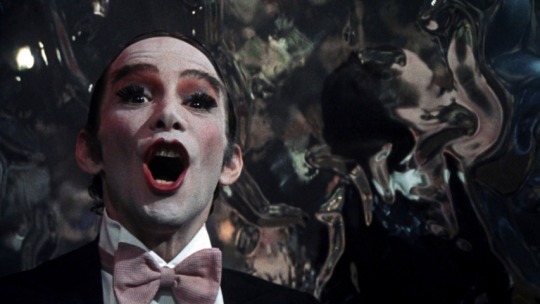

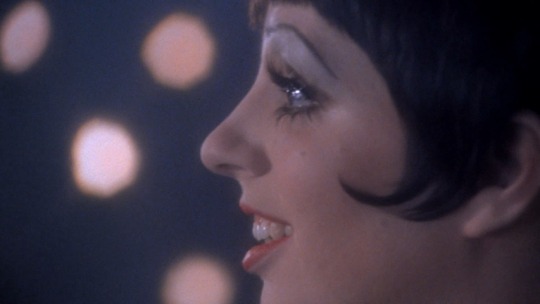




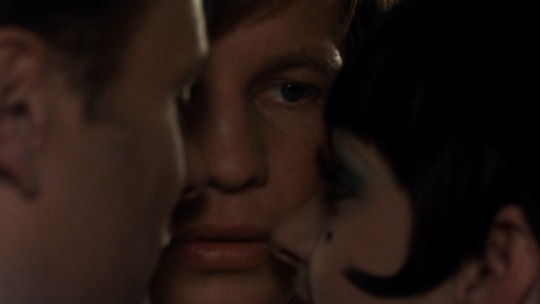


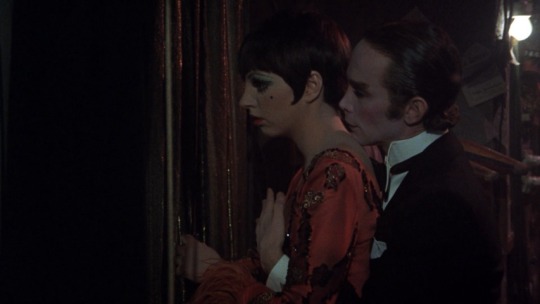
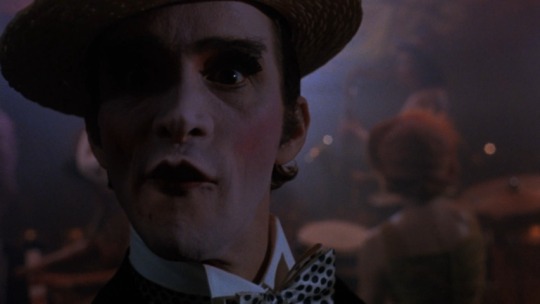
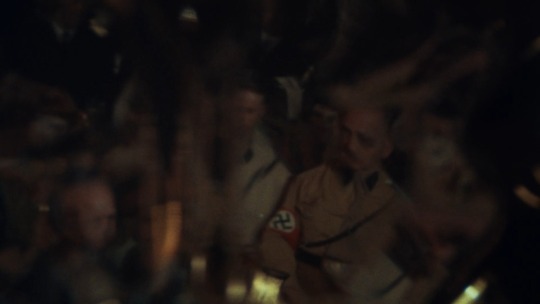
Cabaret (1972)
Director: Bob Fosse
Cinematography: Geoffrey Unsworth
Production Design: Rolf Zehetbauer
#film stills#cinematography#cabaret#cabaret 1972#bob fosse#liza minnelli#joel grey#michael york#70s film#70s cinema#70s aesthetic
115 notes
·
View notes
Text

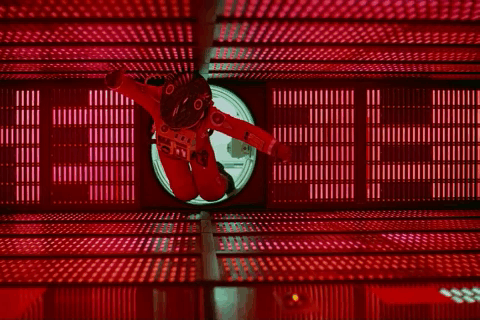

🎦 2001: A Space Odyssey (1968)
🎬 Stanley Kubrick
🎥 Geoffrey Unsworth & John Alcott
#2001: A Space Odyssey (1968)#1968#film#movie#science fiction#2001: A Space Odyssey#2001#A Space Odyssey#Stanley Kubrick#cinema#film gifs#movie gifs#cinephile#cinematography#art house#filmmaking#favorite films#film still#film edit#cine#classic movies#classic film#movie of all time#such a good movie#movie review#film tag#film review#filmography#movie scenes#letterboxd
30 notes
·
View notes
Text

Keir Dullea in 2001: A Space Odyssey (Stanley Kubrick, 1968)
Cast: Keir Dullea, Gary Lockwood, William Sylvester, Daniel Richter, Leonard Rossiter, Margaret Tyzack, Robert Beatty, Sean Sullivan, Douglas Rain (voice). Screenplay: Stanley Kubrick, Arthur C. Clarke, based on a story by Clarke. Cinematography: Geoffrey Unsworth. Production design: Ernest Archer, Harry Lange, Anthony Masters. Film editing: Ray Lovejoy.
I know that I first saw 2001 on April 13, 1968, because (as a little Googling tells me) that was the date of the lunar eclipse I witnessed on leaving the theater, an appropriately cosmic climax to the cinematic experience I had just had. Kubrick's film was an experience to be savored by those of us who were already hip to the revolution in American filmmaking underway after the sensation of Bonnie and Clyde (Arthur Penn, 1967) and The Graduate (Mike Nichols, 1967). I doubt that anyone who wasn't of an age to experience it realizes quite how revolutionary those movies seemed to us. Though it's conventional to say that our experiences were produced in part by controlled substances, anyone who really knows me knows that I wasn't under the influence of any substance stronger than beer. Today, 2001 doesn't seem much like a revolutionary film: We have lived through the actual 2001, which had its own epoch-making event in the September of that year, but in which no one was making trips to the moon on Pan Am. That airline went out of business in 1991, and the last real moon expedition, Apollo 17, took place in December 1972. But the future is never quite what it's cracked up to be. What was revolutionary about 2001 the movie is that it taught us how a movie can make us think without spelling out its ideas for us. Kubrick wisely whittled down the narrative given him by Arthur C. Clarke to a series of images, and ditched the score written by Alex North for an evocative set of snippets from classical works, letting us assemble any meaning to be derived from the film for ourselves. Of course, in 1968 we went back to our homes and dorm rooms and did just that. Seeing it today, I am most struck by how skillful Kubrick was in creating the persona of HAL, the sentient computer. Much credit goes, of course, to the voiceover work of Douglas Rain, but also to Kubrick's choice to make the dialogue of the humans in the movie as banal and jargon-filled as possible. HAL's final pleading and breakdown as Dave pulls his memory chips is haunting. Yes, the movie has its longueurs: Kubrick is deservedly proud of its landmark special effects and spends more time than is necessary showing them off. They won him the film's only Oscar, without honoring the work of Douglas Trumbull and others who executed them. He was also nominated as director and as co-screenwriter with Clarke, and the art direction team received a nod, but the film was passed over for the significant work of cinematographer Geoffrey Unsworth, who was assisted by John Alcott, and for the sound crew headed by Winston Ryder. And it failed to receive a best picture nomination in the year when that award went to Oliver! (Carol Reed, 1968). I happen to like Oliver! and don't think it's necessarily one of the Academy's more shameful choices, but it's certainly not an epochal movie.
12 notes
·
View notes
Text
2001: A Space Odyssey

Directed by. Stanley Kubrick
Cinematography. Geoffrey Unsworth




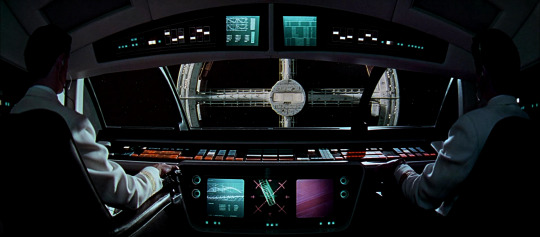
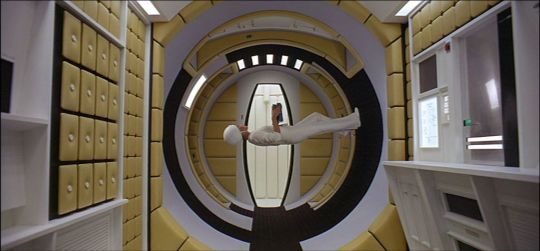
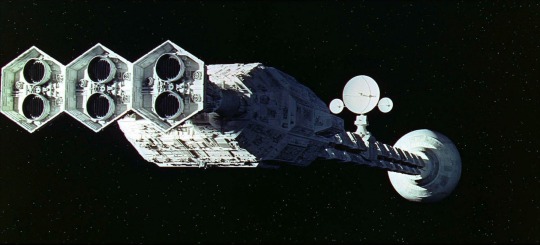

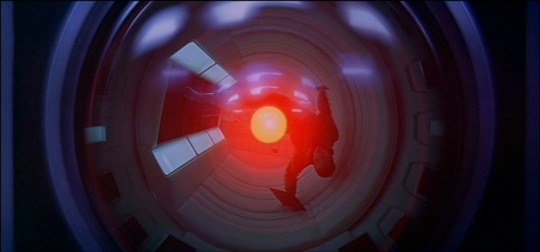
12 notes
·
View notes
Text
135 planos que harán que recuperes la fe en el cine
youtube
Un maravilloso vídeo ensayo de hace diez años que en su momento se hizo viral.
En el verano de 2012, Flavorwire solicitó a sus lectores que sugirieran aquellas películas que consideraban eran las mejores de la historia del cine. El resultado, un montaje que la revista de cultura editó con los títulos propuestos por sus lectores y que rinde un hermoso homenaje al séptimo arte.
Si eres amante del cine, seguro que disfrutarás de los magníficos ocho minutos que dura el montaje de Flavorwire.
Las películas de las que se han extraído los planos, en orden de aparición:
Man with a Movie Camera (Mikhail Kaufman), The Assassination of Jesse James by the Coward Robert Ford (Roger Deakins), Baraka (Ron Fricke), Koyaanisqatsi (Ron Fricke), Days of Heaven (Nestor Almendros), Akira Kurosawa’s Dreams (Takao Saito, Shoji Ueda), What Dreams May Come (Eduardo Serra), Legends of the Fall (John Toll), Lawrence of Arabia (Freddie Young), El Topo (Rafael Corkidi), La Dolce Vita (Otello Martelli), The Tree of Life (Emmanuel Lubezki), Daughters of the Dust (Arthur Jafa), Chinatown (John A. Alonzo), Hero (Christopher Doyle), Kagemusha (Takao Saito, Shoji Ueda), The Night of the Hunter (Stanley Cortez), Ugetsu (Kazuo Miyagawa), Songs from the Second Floor (Istvan Borbas, Jesper Klevenas, Robert Komarek), The Black Stallion (Caleb Deschanel), Vertigo (Robert Burks), Manhattan (Gordon Willis), Apocalypse Now (Vittorio Storaro), Lovers of the Arctic Circle (Gonzalo F. Berridi), The Duellists (Frank Tidy), Powaqqatsi (Graham Berry, Leonidas Zourdoumis), Ran (Asakazu Nakai, Takao Saito, Shoji Ueda), Bombay Beach (Alma Har’el), 2001: A Space Odyssey (Geoffrey Unsworth), The Thin Red Line (John Toll), Cave of Forgotten Dreams (Peter Zeitlinger), The New World (Emmanuel Lubezki), Solaris (Vadim Yusov), The Diving Bell and the Butterfly (Janusz Kaminksi), I Am Love (Yorick Le Saux), A Matter of Life and Death (Jack Cardiff), Onibaba (Kiyomi Kuroda), Blue Velvet (Frederick Elmes), No Country for Old Men (Roger Deakins), I Am Cuba (Sergei Urusevsky), The Fountain (Matthew Libatique), There Will be Blood (Robert Elswitt), The Human Condition (Yoshio Miyajima), The Proposition (Benoit Delhomme), Raise the Red Lantern (Lun Yang, Fei Zhao), The Godfather Part II (Gordon Willis), 2046 (Christopher Doyle, Pung-Leung Kwan), Beauty and the Beast (Henri Alekan), Melancholia, (Manuel Alberto Claro), Road to Perdition (Conrad L. Hall), Alexander Nevsky (Eduard Tisse), Sunrise (Charles Rosher, Karl Struss), Blade Runner (Jordan Cronenweth), Citizen Kane (Gregg Toland), House of Flying Daggers (Xiaoding Zhao), Wings of Desire (Henri Alekan), Atonement (Seamus McGarvey), The Last Emperor (Vittorio Storaro), Before Night Falls (Xavier Perez Grobet, Guillermo Rosas), The Last Picture Show (Robert Surtees), The Red Shoes (Jack Cardiff), Down by Law (Robby Müller), Amelie (Bruno Delbonnel), Chungking Express (Christopher Doyle, Wai-keung Lau), Children of Men (Emmanuel Lubezki), Black Orpheus (Jean Bourgoin), The Leopard (Giuseppe Rotunno), The Age of Innocence (Michael Ballhaus), Perfume: The Story of a Murderer (Frank Griebe), Raging Bull (Michael Chapman), The Fall (Colin Watkinson), The Pillow Book (Sacha Vierny), Martha Marcy May Marlene (Jody Lee Lipes), Nosferatu the Vampyre (Jorg Schmidt-Reitwein), The Third Man (Robert Krasker), Good Night and Good Luck (Robert Elswitt), The Scarlet Empress (Bert Glennon), The Man Who Wasn’t There (Roger Deakins), Talk to Her (Javier Aguirresarobe), In The Mood for Love (Christopher Doyle, Pung-Leung Kwan, Ping Bin Lee), The Man Who Cried (Sacha Vierny), Santa Sangre (Daniele Nannuzzi), The Passion of Joan of Arc (Rudolph Maté), In Cold Blood (Conrad L. Hall), 8 ½ (Gianni Di Venanzo), Brazil (Roger Pratt).
_________________
Fuente: Flavorwire.
7 notes
·
View notes
Text

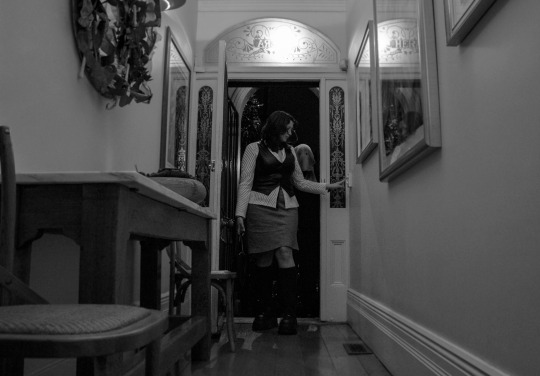

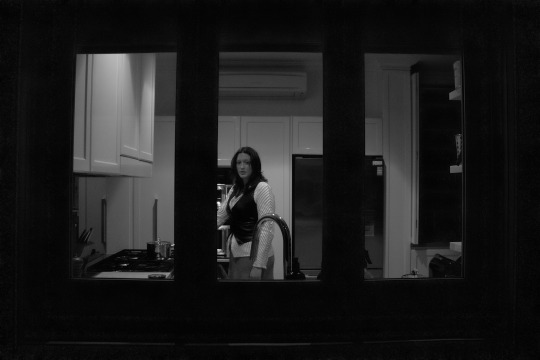
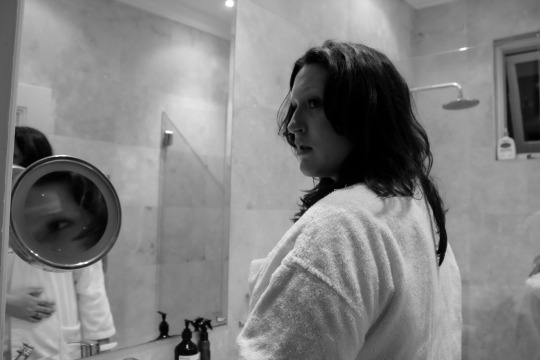
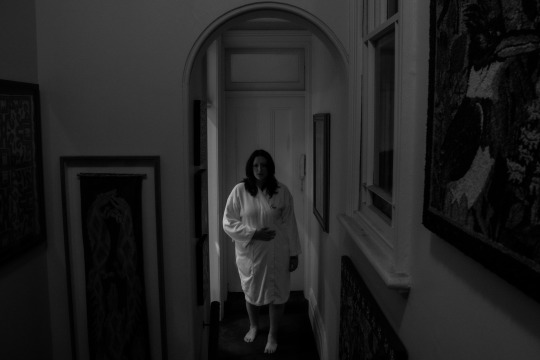
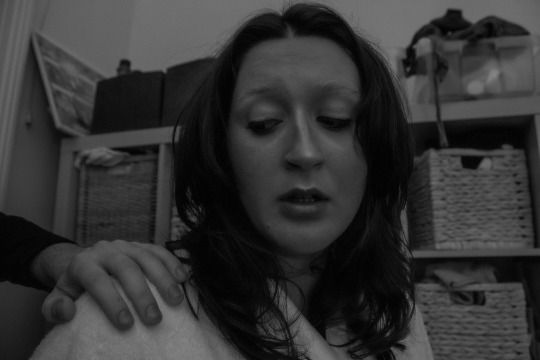


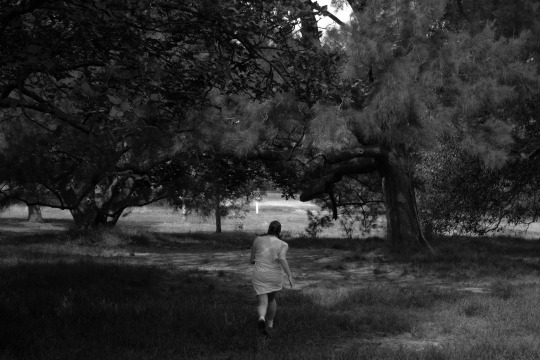
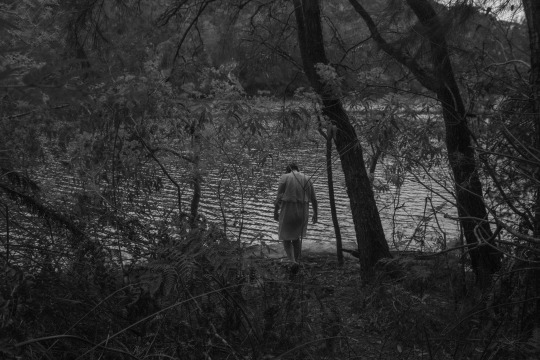
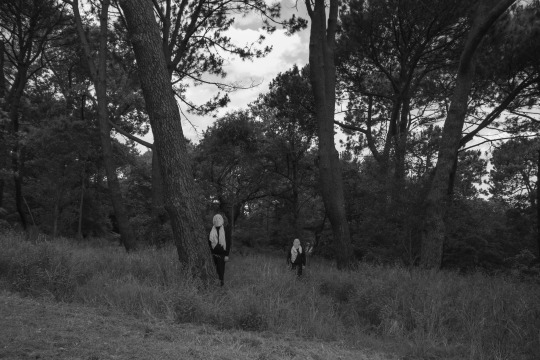


A Woman Is Never Alone.
Medium
Photography
Year
2022
Inspired by Cindy Sherman and the cinematography of John Alcot and Geoffrey Unsworth, this series aims to capture two performances: that of a final girl in a non-existent horror film, and that of the film's creators. The fake horror film revolves around the media's obsession with purity culture and the need for unnecessary female suffering in television and film. The use of black and white was intended to evoke the works of Alfred Hitchcock and Wes Craven, where we find the origins of horror tropes that use women as a cinematic tool to scare audiences and discourage immoral behaviour.
#photographers on tumblr#original photographers#photoshoot#photograhy#black and white#bwfilm#film#35mm film#horror#cindy sherman#gregory crewdson#alfred hitchcock#performance#cinema#storyboard#artists on tumblr#women artists
5 notes
·
View notes
Video
youtube
Superman (1978) - 'Helicopter Sequence' scene [1080]
a comic book adaptation with a subtle, dreamy patina - thanks to geoffrey unsworth’s gauzy cinematography. director richard donner must’ve had a preference for the diffused look, since his previous blockbuster “the omen” took a similar visual approach.
1 note
·
View note
Text
Blanche Fury
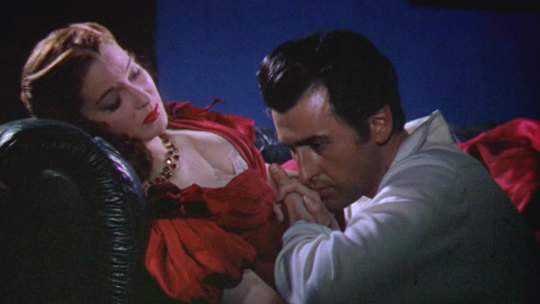
Watching Marc Allegret’s BLANCHE FURY (1948, Criterion Channel, YouTube) is like eating an entire box of chocolates in one sitting. It’s a luscious wallow. Anthony Havelock-Ellis produced the film to cash in on the popularity of the Gainsboorough melodramas and provide a distraction for his wife, Valerie Hobson, who had just given birth to a child with Down’s syndrome. Her role as a poor relation hired as governess to her wealthy cousin’s motherless daughter certainly gives her a lot to work with, particularly when she’s torn between the cousin (Michael Gough, in his film debut; was he ever really that young?), who offers her security and wealth, and the groundsman (Stewart Granger), who offers her pure unbridled sex. She tries to have it both ways, with deadly results. The film has some interesting parallels to GONE WITH THE WIND (1939) in Hobson’s marriage of convenience, her grudging attraction to magnetic Granger and the presence of a female child obsessed with show jumping. There’s even a shot of Hobson in a 19th-century bonnet turning to reveal her face to the camera that’s almost identical to a similar shot of Vivien Leigh. All that’s lacking is the passion. Hobson was a beautiful, intelligent actress and does a lot of solid work here, but it’s hard to believe she’s in the grips of uncontrollable ardor. Granger is quite good, and Gough is priggish enough you’re not going to miss him when he’s gone. And the whole thing looks scrumptious in Guy Green and Geoffrey Unsworth’s Technicolor cinematography. Clifton Parker did the lush, symphonic score that pushes the whole thing into the kingdom of divine decadence.
0 notes
Text

Murder on the Orient Express (Sidney Lumet, 1974)
As this film begins - the first big screen version of Agatha Christie's famous murder-mystery novel set on a train, the exotic Orient Express, traveling from Istanbul to Calais - it becomes immediately apparent that we are in for something old fashioned and glamourous. The names of the film's cast appear on a pink satin background during the film's opening credits accompanied by Richard Rodney Bennett's rousing symphonic score. The decision to cast huge stars as the murder suspects was an inspired choice with Sean Connery (as a retired Army Colonel) the most famous at the time although having both Ingrid Bergman (playing a Swedish missionary) and Lauren Bacall (as a crass twice married divorcée) brought the film a touch of class as they both represented an era in Hollywood known for it's elegance and glamour. The story's main character - the famous Belgian detective Hercule Poirot - is played by Albert Finney who physically transforms himself into the role - beady shifty eyes, lathered down greasy hair, a thin very pampered and dramatic moustache, the requisite french accent, a constant stream of bodily tics and extremely annoying countenance. A dream role for an actor to have fun hamming it up which Finney does with great comic delight. The rest of the passengers - a bizzarre group of unrelated characters - who become suspects in the murder of a shady businessman (Richard Widmark) are an aloof Russian aristocrat (Dame Wendy Hiller), her maid (Rachel Roberts), the trian's conductor (Jean-Pierre Cassell), an English governess (Vanessa Redgrave), a Hungarian count (Michael York), his elegant wife (Jacqueline Bisset), the victim's secretary (Anthony Perkins), his valet (Sir John Gielgud), a Pinkerton bodyguard (Colin Blakely) and an Italian car salesman (Dennis Quilley). Helping Poirot in the murder investigation are his friend, the director of the railroad line (Martin Balsam), and a doctor (George Coulouris who had been part of Orson Welles' Mercury Theatre). Tony Walton created the interiors of the train and dressed all the stars in stunning 1930s finery. The film's famous denouement, as in all of the Poirot stories, has him gathering all the suspects together and explaining how the crime was committed and then with a malicious flourish reveal the murderer. The film belongs to Finney who easily dominates every scene but there are equally memorable turns by Bacall, Bergman, Hiller, Roberts and Gielgud who within literally minutes of screen time hold their own opposite the bombastic Finney. The film was nominated for six Oscars - Best Actor (Finney), Supporting Actress (Bergman - who won her third Oscar), Adapted Screenplay, for Geoffrey Unsworth's rich cinematography, Tony Walton's magnificent costumes and for Richard Rodney Bennett's marvelous score - he created a waltz which played as the train moved. Great fun and much better than the recent remake by Sir Kenneth Branagh.
0 notes
Text
Money Money Money ...
Na Berlim de 1933, uma cantora americana se transforma em atração no Kit Kat Club. Sua vida, carreira e amores se desenvolvem paralelamente à ascensão do nazismo, enquanto ela se envolve ao mesmo tempo com um professor de inglês e um nobre alemão.
Oscar de Melhor Atriz
1973 • Liza Minnelli
Oscar de Melhor Ator Coadjuvante
1973 • Joel Grey
Oscar de Melhor Direção
1973 • ROBERT FOSSE
Prêmio Globo de Ouro: Melhor Filme Cômico ou Musical
1973 • Cy Feuer
Oscar de Melhor Fotografia
1973 • Geoffrey Unsworth
0 notes
Text
"A NIGHT TO REMEMBER" (1958) Review
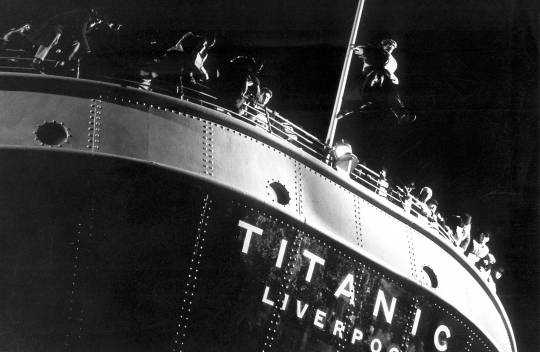
"A NIGHT TO REMEMBER" (1958) Review
There have been many versions about the April 1912 sinking of the R.M.S. Titanic. Many versions. And I have personally seen at least five of them. One of them happened to be the 1958 movie, "A NIGHT TO REMEMBER".
Directed by Roy Ward Baker, "A NIGHT TO REMEMBER" is based upon historian Walter Lord's 1955 book about the historical sinking. Since the 1958 movie was based upon a historical book instead of a novel, Baker, producer William MacQuitty and screenwriter Eric Ambler approached the film's plot in a semi-documentary style. Even the movie's leading character turned out to be the Titanic's Second Officer, Charles Lightoller, who was portrayed by actor Kenneth More. The movie also featured other historical figures such as J. Bruce Ismay, Thomas Andrews, Captain Edward J. Smith and Margaret "Molly" Brown. Due to this semi-documentary approach, "A NIGHT TO REMEMBER" is regarded as the best movie about the Titanic.
I cannot deny that there is a great deal to admire about "A NIGHT TO REMEMBER". Not only do I feel it is an excellent movie, I could see that Roy Ward Baker did his best to re-create that last night aboard the Titanic. He and Ambler gave the audience glimpses into the lives of the ship's crew and passengers. The movie also went into great detail of their efforts to remain alive following the ship's brief collision with an iceberg. Some of my favorite scenes include the Irish steerage passengers' efforts to reach the life boats on the upper decks, the wireless operators' (David McCullum and Kenneth Griffin) efforts to summon other ships to rescue the passengers and crew, and passenger Molly Brown (Tucker McGuire)'s conflict with the sole crewman in her lifeboat. But my favorite scene has to be that moment when the Titanic's stern rose high before the ship sank into the Atlantic Ocean.
For a film shot in black and white during the late 1950s, I must admit that "A NIGHT TO REMEMBER" looked very handsome. Legendary cinematographer Geoffrey Unsworth's phtography struck me as sharp and very elegant. I do not know if Yvonne Caffin's costume designs for the movie's 1912 setting was completely accurate, but they certainly did add to the movie's late Edwardian atmosphere. Especially those costumes for the first-class passengers. I do have to give kudos to the special effects team led by Bill Warrington. He and his team did a superb job in re-creating the ocean liner's historic sinking. I am even more impressed that their work still manages to hold up after fifty-four years.
The cast of "A NIGHT TO REMEMBER" was led by Kenneth More, who portrayed Second Officer Lightoller with his usual energetic charm. More was ably supported by the likes of Laurence Naismith as Captain Smith, Michael Goodliffe's poignant portrayal of ship designer Thomas Andrews, Frank Lawton as J. Bruce Ismay, George Rose as the inebriated survivor Charles Joughin and Tucker McGuire's colorful portrayal of American socialite Molly Brown. The movie also featured future "AVENGERS" and Bond veteran Honor Blackman; David McCullum of "THE MAN FROM U.N.C.L.E." and "N.C.I.S." fame; and Bernard Fox, who will also appear in James Cameron's 1997 movie about the Titanic sinking. Even Sean Connery made an uncredited appearance in the film, but I never did spot him. But despite the numerous good performances, I honestly have to say that I found nothing exceptional about any of them.
Like many others, I used to believe that "A NIGHT TO REMEMBER" was the best movie about the Titanic. After this latest viewing, I do not believe I can maintain that opinion any longer. In fact, I am beginning to suspect there may not be any "ultimate" Titanic film. And "A NIGHT TO REMEMBER" is not perfect, as far as I am concerned. Many have applauded the filmmakers for eschewing any fictional melodrama or using the sinking as a backdrop for a fictional story. Personally, I could not care less if a Titanic movie is simply a fictional melodrama or a semi-documentary film. All I require is a first-rate movie that will maintain my interest.
"A NIGHT TO REMEMBER" began with a montage of newsreel clips featuring the Titanic's christening in Belfast. One, the ship was never christened. And two, I could see that the newsreel footage used in the movie dated from the 1930s. The movie tried its best to allow the audience to identify with some of its characters. But due to "A NIGHT TO REMEMBER" being a docudrama, I feel that it failed to give an in-depth study of its more prominent characters . . . making it difficult for me to identify with any of them.
I realize that "A NIGHT TO REMEMBER" was a British production, but I was amazed at the low number of American passengers featured in the cast. The 1953 film, "TITANIC" suffered from a similar malady - the only British characters I could recall were members of the crew. I do remember at least three Americans in the 1958 movie - Molly Brown; Benjamin Guggenheim, portrayed by Harold Goldblatt and a third passenger, whose name escapes me. I was satisfied with McGuire's performance as Molly Brown and the nameless actor who portrayed the third American passenger. But Goldblatt portrayed Guggenheim as a member of the British upper class in both attitude and accent. It almost seemed as if the filmmakers wanted Guggenheim to be viewed as a British gentleman, instead of an American one.
Walter Lord's book made it clear that one of the last songs performed by Titanic's band was NOT "Nearer My God to Thee". Yet, the filmmakers chose to perpetrate this myth in the movie by having the remaining passengers and crew sing the song en masse before the ship began to sink in earnest. This pious attitude continued in a scene aboard the R.M.S. Carpathia, in which the survivors listened to a religious sermon. Instead of projecting an air of melancholy or despair, the survivors, thanks to Ward Baker, seemed to project an air of the British stiff upper lip cliche. I feel that a melancholic air among the survivors would have made the scene seem more human.
I cannot deny that "A NIGHT TO REMEMBER" is a first-rate look at the sinking of the R.M.S. Titanic. More importantly, the movie and especially the visual effects still hold up very well after half-a-century. But the movie possesses flaws that make it difficult for me to regard it as the best Titanic movie ever made. Perhaps . . . there is no best Titanic movie. Just bad or well-made ones.
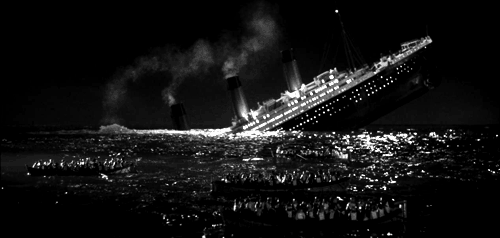
#s.s. titanic#titanic#a night to remember#a night to remember 1958#roy ward baker#kenneth more#michael goodliffe#laurence naismith#kenneth griffith#david mccallum#tucker mcguire#frank lawton#richard leech#anthony bushell#alec mccowen#ronald allen#jill dixon#george rose#john merivale#honor blackman#bernard fox#sean connery#russell napier#desmond llewelyn#jeremy bulloch#geoffrey bayldon#peter burton#norman rossington#period drama#period dramas
9 notes
·
View notes
Text

2001: A Space Odyssey
Directed by Stanley Kubrick
Photographed by Geoffrey Unsworth
1 note
·
View note